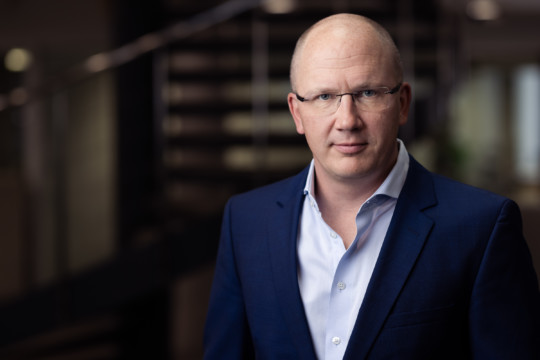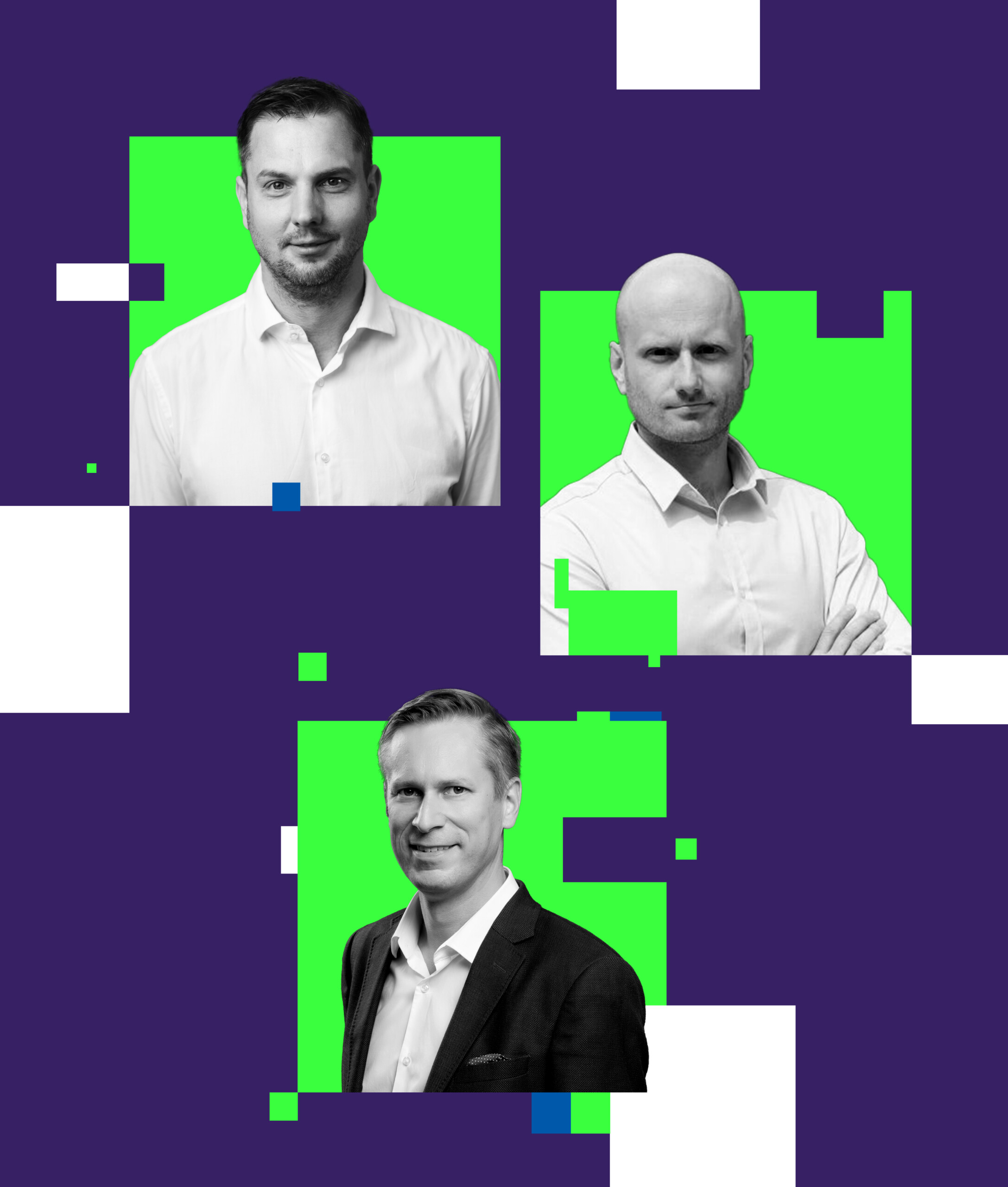News
Priit Alamäe: Challenging the “but” in digitalization
Nortal’s story began (in Estonia) at the same time the second government of Mart Laar decided to go all in on digital transformation in 1999, followed by the accession to the European Union in 2004.
There was an unwritten societal and political understanding that a digital society is the only way forward for a country that needs to run the sovereign complexity while radically improving the business climate, enabling citizens and businesses to focus on their core progress, and hiding the complexity of the administration and taxation. The backdrop for the rapid transformation was a unique combination of unlimited political will, enthusiasm, and extremely limited budgets, creating a start-up-like culture and approach to digitalization.
Three decades later, the resulting perfect storm has brought us to where Estonia is now – the first in the world to offer 99% of public services online 24/7, making the nation one of the world’s most trusted administrations. Nortal has been a driving force behind the strategic transformation and has since delivered 40% of what is collectively known as the Estonian e-government.

– Priit Alamäe, CEO of Nortal
Three decades later, the resulting perfect storm has brought us to where Estonia is now – the first in the world to offer 99% of public services online 24/7, making the nation one of the world’s most trusted administrations. Nortal has been a driving force behind the strategic transformation and has since delivered 40% of what is collectively known as the Estonian e-government.
Estonia can be the inspiration for both “what” and “how”
Whereas most of the world is stuck in digitalizing the processes built up over many years due to endless political compromises, Estonia focuses on the next chapter.
The new goal is to entirely hide the complexity of the state apparatus from citizens and design the whole government-citizen-business interaction as a collection of well-orchestrated, socially inclusive proactive services that would enable real-time service-provision and communication in a non-intrusive manner.
The first life-event-based proactive service was designed and built for family and parental benefits in 2019. Before this transformation, every application took state officials 65 minutes to process, and parents of a newborn had to understand and handle the administrative complexity.
Now, they receive a proactive proposal from the government for the benefits they are entitled to. As the young parents leave the hospital, their parental support money is already transferred. Why should any citizen ever have to apply for a service they are clearly entitled to receive? That’s proactive, human-centric, fast, socially responsible, and efficient. That’s the path governments ought to take for their people and economy.
– Priit Alamäe, CEO of Nortal
Why should any citizen ever have to apply for a service they are clearly entitled to receive? That’s proactive, human-centric, fast, socially responsible, and efficient. That’s the path governments ought to take for their people and economy.
Estonia can inspire both the “what” and “how.” The above-mentioned uncompromising approach is key in this context since one of the traps we have mostly managed to avoid is “yes, but.”
More often than not, we see progress in digitalization in many countries stopping when the answer is “yes, but …”. What you typically hear from politicians and state officials is that the Estonian example is great, BUT it is much more challenging and complex in their own case – there is a legacy to build on, Estonia is much smaller, the structures are more complex, federalism does not allow it.
Historical complexity should not be an excuse for stopping societal progress. When Estonia decided to go all-in on digital society, the majority of the people did not even have access to the internet. So, the decision-makers could have said “yes, but” and stopped there.
– Priit Alamäe, CEO of Nortal
When Estonia decided to go all-in on digital society, the majority of the people did not even have access to the internet. So, the decision-makers could have said “yes, but” and stopped there.
Some principles apply to any organization going through a (digital) transformation:
- Strong political will, a clear vision, and commitment to change.
- Creation of trust for the system and social cohesion.
- Not using legacy as an excuse.
- Fast, iterative steps combined with learning-by-doing.
- Not making compromises that lead to mediocre outcomes.
Of course, we hear the argument often that Estonia is a fraction of the size of, for example, the U.S. and that there is no point in comparing the two. This is simply not true. It is often actually the opposite.
Regardless of whether a bank has 100,000 or 10,000,000 customers, the customers will expect the same quality of service to keep them loyal. Building a fully functional customer support system will be maybe 5x more expensive for the bigger bank due to scalability requirements, but definitely not 100x more. The cost per user, however, will still be significantly less for them.
– Priit Alamäe, CEO of Nortal
Of course, we hear the argument often that Estonia is a fraction of the size of, for example, the U.S. and that there is no point in comparing the two. This is simply not true. It is often actually the opposite.
What to take across the Atlantic?
For example, currently, only 2% of government forms are digitized in the U.S. – the question is not if but how and where to start transforming.
Think about the citizen experience and let the expected outcome guide the process. Create faster response-time requirements for public authorities; restrictions on repetitive data collection (the once-only principle); shield the complexity of the state from the people and businesses; and use advancements in technology, data, and AI to create better and inclusive experiences for citizens.
Establish lean methodologies and agile procurement mechanisms for fast prototyping and working in smaller steps. Always think outside in. If there is a choice to be made, let the back office suffer.
Build on public-private partnerships because the government needs help to drive digital transformation. It can help set the direction and a single digital infrastructure that is accessible to all. However, the speed and depth of digital transformation in any given society can only be achieved through a coordinated effort with the private sector. Of all the digital transactions that a person might have in one month, only a small part will be tied to the government.
– Priit Alamäe, CEO of Nortal
Think about the citizen experience and let the expected outcome guide the process.
Most importantly, fight the “but” and start finding solutions instead of problems. The right reform is painful only in the short term for some parts of society but beneficial for citizens and the economy in the long term. Change is difficult, especially in sectors with solid traditions and significant inertia: the public sector, education, and healthcare. It often requires a kamikaze-like steadfastness to champion and complete the reforms that force people to work and act in new ways.
Technology is not a limiting factor to this change – missing decisiveness is. The Estonian example shows that the outcome of digitalization is not digital processes but increased transparency, reduced corruption, economic advancement, and public approval. If we continue accepting the but, the lives of most citizens and enterprises will remain deprived of the progress and efficiency enjoyed in other countries, and the local economy will be left behind. Estonia’s example can help, almost serving as the perfect pilot for any decision-maker who wants to prove that everything that comes before “but” is just empty words.
The article was published in Baltic Rim Economies, a publication by Centrum Balticum Foundation, an independent non-profit organisation specialized in Baltic Sea cooperation.

Join our webinar discussion: Digital government is over. The era of personal government is on the rise
Watch the recording of our virtual discussion with industry experts Andres Raieste (Senior Vice President of the Public Sector at Nortal), Mihkel Solvak (Associate Professor at the University of Tartu), and Ville Sirviö (CEO of the Nordic Institute for Interoperability Solutions), as we delve into the future of public services, emphasizing the critical role of trust in digital services and exploring the future of interoperability from a global and whole-of-society perspective.
Watch the recordingGet in touch
Let us offer you a new perspective.


